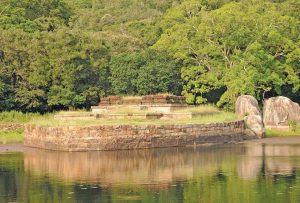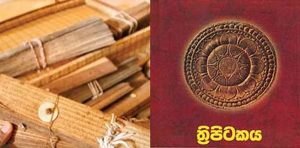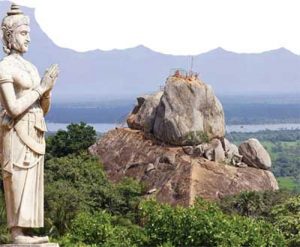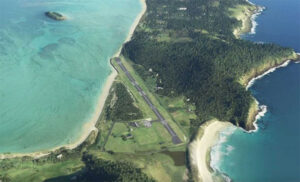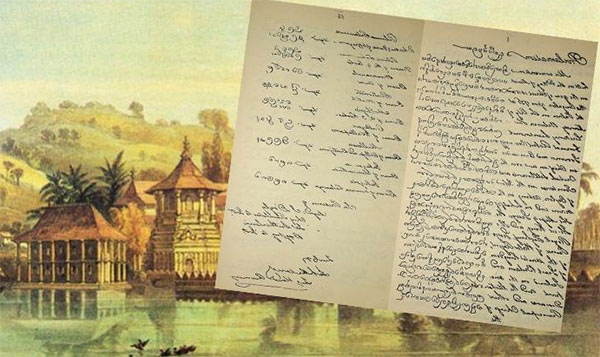
Over the past two million years, the Free Trade regime of Sri Lanka was abandoned on March 2, 1815 at the sacred ‘Magul Maduwa’. The clauses in the notice form were handed over to the British High Commissioner by the British Governor, Robert Brownrig and the Kandyan Rites.
This agreement, which is referred to as a great betrayal by some local and foreign historians, is a matter of contemplating such a controversy by keeping an eye on events in Sri Lanka instantly.
Up country environment
The atmosphere that developed upcountry to 1815 dates back to the time of Nayakkars from the upcountry throne. Some of the ancient Sinhalese kings married the princesses of India to represent him as the Sun of the sun.
This practice, which had been suppressed for a long time, was revived by AD. 1604 – 1635 King Senerat was king. He was also married to his son, who was taken into custody by a princess from India. Accordingly, the second Wimaladharmasuriya, Sri Veerrakum Narendrasinghe married the princesses of his bride.
King Nayakkar ordered the king’s throne to his brother’s brother as the throne of “Udumale” and the two of his sisters who married the last king of Sri Lanka, Sri Weera Parakrama Narendrasinghe and his two sisters. Accordingly, he was succeeded by King Sri Wijaya Rajasinghe II.
He was associated with Weliwita Saranankara Sangharaja Thero and he was very happy to take on Buddhism with his clergy and pilgrims. Whatever the king of the Kandyans should be in control of the Hela Sita and practicing Buddhist customs, everything was not his own ethnic basis.
But when Nayakkar kings brought the queens from Madurapura, a large number of relatives and friends came to Sri Lanka and they were allocated royal authority for them as well as for the resettlement of a large area in Kandy. Accordingly, “Prince Rupe Street” (Malabar Street) belongs to them.
These powerful Nayakkars were ignorant of the Sinhalese. As a result, the Kandyan people traveled towards the decline, but could serve the king and his relatives. Some Nayakkar engaged in money on interest in pawning and pawning at Kandy in Kandy. Therefore, they were given the opportunity to own a fertile land. This is why there was hatred for Nayakkaras in the Sinhalese.
The influence of Nayakkar’s influence on the royal habits also affected. A famous historian, G. Father Fr. “Nayakkar’s influence was not limited to changing the gazette of the city. They were as powerful as the throne.
So far, the legacy of the Sinhalese throne has been determined by inheritance. And the election process. The throne of the throne, which is the closest relative of the King of Sri Lanka, was confirmed by popular approval.
The said approval was announced through the ministries. Perhaps, according to their own wishes, the king was named after the king after him. The citizens had to expedite the expulsion of their wishes for this appointment.
The royal crown was given to a relative of the king’s blood. But Nayakkar created a significant difference in this heritage. That any king shall not be given a disobedient son, nor a daughter, to the brother of the queen’s crown. ”
Rajadhi Rajasinghe also had five queens, but they did not have any fruit. The first and third quorum were seven brothers. This Mutthusamy was crowned as king.
At this time, when Pilimatalawaye Mahath Adikaram, with great power, thought this opportunity to save the Sinhala throne from the Nayakkers by the power, the king who ruled was a dynasty and a group of officials had against him, leaving this idea and “the country that we like Let’s appoint the king who does not destroy us ” After discussing with the Maha Sangha, the eighteen-year-old Kannasamy Sri Wickrama Rajasingha was re-elected as king, with the intention of removing the prince from the king post and appointing the Sinhala royal line to the upcountry.
Subsequently King Sri Wickrama Rajasinha conspired against Pilimatalawa because he acted arbitrarily. He had relations with English to create a Sinhala dynasty with the help of the British. The king once pardoned Pilimatalawa’s undercurrent, but in 1811 his head was shaken. After him, Ehelepola was appointed as Adhikaram.
He also liberated the local rulers from the postmodernist’s determination to create the Sinhalese dynasty. Most of the Kandyan aristocrats loyally supported Ehelepola, but he was also opposed. The aristocracy split apart and slandered one another. Therefore, the interior of the country was extremely complicated. John Doyle made the most of this situation.
Doyle’s conspiracy
Ehelepola was married to the daughter of Pilimatalawa’s sister. Although he was appointed as the Adjournary Superintendent, he was in the pinnacle of Pilimatalawa. So he also had a secret discussion with the British.
The King wished Ehelepola to get them from Sabaragamuwa to Kandy, but Ehelepola, who did not obey him, rebelled in the Sabaragamuwa Province in March 1814. Sri Wickrema Rajasinghe II sent Molligoda the second in command to Sabaragamuwa and attempted to arrest the Ehelepola, but he returned to Kalutara and returned to Colombo to asylum in Kalutara.
But Ehelepola’s wife and children were captured by the king. They were brutally murdered on May 17, 1814, and all the upcountry people were hated by the king himself.
John Dole was the king’s agent. Sir Robert Brownrigg was appointed to the post of Governor of British Governorate of Ceylon in 1811 by John Doyle. According to Tennakoon Vimalananda, his entourage included several functions. These are:
1. Obviously, the important Kandyan rulers of the king should be known and encouraged.
2. The loyal Nirmalahites saw the king and saw their power.
3. Grant assistance to all monks and their assistance.
4. Finding Different Roads from the Maritime Provinces to Kandy.
5. Rebellion in distant areas.
6. Finding competitions and protests among the main families in the areas in the Sinhalese region.
7 To obtain information about the king’s army, food, weapons, guns, etc.
8. Finding places where the king’s wealth is hidden in an emergency.
9. Reviewing the hiding places during war.
10. Lastly, the functions of the British liquor that were not last of all were sent to the king in various ways.
John Doilly, a civil servant of the British government in the country, was greatly appreciated in learning local languages, a regulation regulating civilian employees. It was well known by the learned Sinhala language of the Dawali scholars from Karatota Dhammarama Morthota Dhammabandha, the learned monks.
The British Governor, who thought best to learn his Sinhala-style method, was instrumental in formulating the strategies of winning the Kandyan Kingdom. John Doilly did this perfectly.
King of drinks
The Kandyan king’s displeasure with the nobility was the first thing he did. The angry angry that the aristocrats were plotting against him always spent night and day in fear of death. Therefore, he was suffering from insomnia. In this way, the greatly disfigured king became addicted to alcohol.
When the British forces broke into the countryside and dug up the palace, a large number of empty bottles of Hoffman’s Red Brandy were found in Europe. John Doile was sent to the liquor shop by the spies.
Thomas Maitland, the governor, is known to have sprinkled alcohol into the King as a gift from Doyle. In the end, the English promised to rescue the Sinhalese from the Dharmiya and his Malbara relics as a brutal dastardly mankind, promising to keep the country clean.
Upcountry invasion
After setting up the situation, the Englishmen who were looking for opportunities to declare war against the Upcountry was given the opportunity to take into consideration the 10 Sinhala traders who were engaged in selling to the upcountry as spies and taken to Kandy and sent back to the coastal belt.
Meanwhile, the British Governor declared war against the Kandyan king on 1 October 1814 because the Kandyan army was defeated in the Sabaragamuwa rebels to the UK. On January 10, 1815, they declared that this invasion was for the upcountry masses. This is what the Sinhala Encyclopedia says.
“In the original sentence of the official announcement of the uprisings of the upcountry kingdom,” the British High Commissariat of Defense invites the British High Commissariat of Defense to the Kingdom of Rajarata, That is not the result It is also clear that the will of the nobles and the people is in need and will.
As a result, the British Army entered the Kandyan Kingdom on February 12, 1815 without any interruption. Dr. Henry Marshall has said that when they went to Kandy, there was no human spray and that the city was burning.
On February 18, 1815, Ekneligoda’s group captured the house of King Sri Wickrama Rajasinghe and the queens, who fled from Kandy. They were hiding in the house of Udupitiye Arachchid in Bomura, in the Middle East. When the men were harassing the king and the queens, Dias Thulaka Mudalis and the queens went with them and handed them over to Doilly.
After capturing the king Sri Wickrama Rajasinha, the government organized a convention for the upcountry. This was handed down to John Dailey. His diary said that he drafted the clauses in the Kandyan Accord. At the preparation of this agreement, controversial discussions took place between Upcountry denominations, Chief Prelate of the Asgiriya Viharaya, Venerable Wariyapola Sumangala Thero and John Doilly, in the book “Hela Raja Kirula Relics and Wariyapola Marihy” Thambelle Seelakkanda Thero.
Its Sumangala said: “Now at this crucial moment, we must take from the British a written promise with our signatures to protect our customs and religion. It should not be allowed to lift their English flag until such a pledge is made. ” So it was not possible to deviate from the fact that Doyle could formulate the upcountry convention.
Wariyapola Sumangala? Has the English flag been put down?
C. In front of the Sinhalese chiefs who had gathered at the 4th of August at 2 pm, on 2 March 1815, the resolution was read in both Sinhala and English and explained to Sinhala chiefs and citizens.
That agreement was comprised of 12 clauses. After explaining the clause, the English flag was hoisted in the palace’s royal palace. Certain historians reluctantly acknowledge the news that Wariyapola Sumangala Nayakaike who upheld the brave clue was true. This is because John does not mention that such an event took place.
John Doilly did not report this incident because John Doilly, the Englishman, was of the view that an incident that was too little to England could make him feel like joining history. Tumblelse Seelakkanda thero who quoted a document in the timetable of the incident and pointed out that he was quoted by his advocate Walter Wimalachandra. The note reads as follows:
“In the nineteen Buddhist monasteries of NAM in the ninety month, Rehana at about the same hour after three hours of the Nawam last month, handed over King Sri Wickrama Rajasinghe and handed him over to the British. At the time the English flag was written before the agreement was signed, Wariyapola Leader made the tale and tramped it down and allowed the English flag to snap. He put the Sinhala flag on it.
At that time, the Tooth Relic had its Lord Wariyapola. The hand of the tooth relic and taking the relic to the Dambulla kula is a place where the devotees are unable to sacrifice at the new hourly hour … A man climbs the bee from the bee and bows it to him … The opportunity that the monk does not have the Sacred Tooth Relic is not a danger Knowledge has been handed over … Siddham ”
The Wariyapola Sumangala Thera was the guardian of this time. He is mentioned in the 1818 Kandyan revolt concealing the tower from the jungle and later to the delivery to the English. It is clear that this document is about a language style, but it is a real-time document.
Wariyapola Thero’s accusation that the English government sued him was the robbery of the tower in the 1818 insurrection and robbed it of the Temple of the Tooth Relic. The English flag could not be tampered with because of the fact that they knew it was an offense by the British to raise the flag before signing the agreement.
Agreement clauses
As stated earlier, the Kandyan Convention published on March 2, 1815 consisted of eight clauses. The summary of the 12 sections is as follows:
01. Sri Wickrema Rajasinghe is being sacked from the throne
02. Every one of his or her cousins shall have the right of throne to be canceled.
03. The relatives of the king should be expelled from all parts of the country.
04. From here, the Great King is appointed as the Lord of the Sinhalese Kingdom. The British ruler must govern the country through the Governor’s seat.
05. It is necessary to protect Buddhism without doing anything harmful to Buddhism. Sangha, religious service, and temple will be protected.
06. Undercutting cruelty punishments must be revoked.
07. The Governor can condemn anyone
08. Sinhalese officers should settle the civil lawsuits and criminal cases in the Sinhala state according to the laws and customs. The English government has the right to intervene in these cases, if necessary.
09. The case law of the lower Sinhalese cases is settled in English according to the English law.
10. The original declaration that the three corners, Sathara Koralaya and Sabaragamuwa are the sole discovery of the British by the British.
11. In the name of the British king, taxes are levied for the government.
12. Governor of the place places trade facilities between the two countries freely.
The Kandyan Convention was proclaimed on March 2, 1815, but it was signed on March 10th. On that day, Governor Sir Robert Brownrigg for Pilgrimage to the Sinhalese Party, Piligatawalavy (the first Adikaram and Sabaragamuva Disawa) for Molligoda (Monaragala), Keppetipola (Uva Disawa), Ratwatte (Matale District), Molligoda (Thunkora), Dullewa (Walapane Disis) Millewa (Bintenne Disawa) and Galagama (Thamankaduwa) signed the agreement.
Ehelepola has been listed sick since March 3 to 11 in his Daily Mail. Doyle has said that three members of the Sinhalese party, Ehelepola Galagoda (Kandy Artista Disawa) and Pilimathalawa (Sathara Korale Disawa) have been reconfigured on March 18. It was on that day that Diliyli signed the agreement that day.
Ehelepola’s signature
The signature of the agreement in the agreement is different from the signature in other documents of Ehelepola. Different people think differently. A famous historian, Paul E., signed it. Prof. Peiris has stated this:
“Two explicit copies of both languages had to be prepared, so it took several days to sign the document.
The signatories were six general secretaries who had been appointed governor of Brownrigg at the intermission and six district secretaries of the GA and Ehelepola district who signed on March 18. With the use of iron scissors, these people who used to write the herbs used to throw a geese on a leaf in ink were unfamiliar.
Monarawila, Galagama and Galagoda Sinhalese letters were used by others to use the text of the text of the government in much later period, similar to Sinhala and Tamil.
Paranavitharana has said that the letter is not a language but a letter to the Tamil alphabet on the one hand, and on the other hand it is a writing system that is similar to the Sinhala letter. This is a good answer to those who disgruntled that some Kandyan chiefs have signed the Tamil agreement. They may have used signatures in the “Book” letters used for state regimental purposes in regard to the importance of the treaty.
Ehelepola’s usual admiration is that he deliberately made a deliberate act. Dr. Colvin R. de Silva De Silva said that the Kandyan Agreement was a violation of Ehelepola’s expectations.
Therefore, the reason for the change in his tragic end is that he was not interested in the treaty.
Legal status
The Sinhala encyclopedia notes the legal status of this agreement as follows: “As far as I understand, the Kandyan areas belonged to the British because they were handed over to the British rather than on a conquering conditions. Judgments seem to indicate that even in a treaty of secession, conditions can not be changed.
Judge Mansfield said that the terms of the agreement on the surrender of the case against Paul in the case against ‘Campbell’ in the case of the GRANDA agreement could not be changed. If so, the contract of ratification should not be changed.
It became a certified document with the signing of the upcountry agreement before the appropriate British Governor, the British Governor, who was in agreement with the British High Representative, who came to standstill because of his acceptance by the Crown. ”
However, after the 1818 insurrection, the English people neglected this agreement and arbitrarily ratified the terms of the agreement. From the outset the British have acted to make Sri Lanka a colony of a sincere nation.
A British columnist, Sir Jéré Muller, noted that the Slavic leaders of the country honored the legality of the country’s heritage, dignity, identity and protection. They reflected the skillful character of the diplomatic traditions and patriotism. Is a contract. ”
ramani soysa
